Casting Processing methods
1.0 After mixing, A1 can easily be poured into the mould. Releasing the mould is often possible after 1 hour. For vulnerable objects, this period may be longer.
If you have not created enough A1 for the mould, it is possible to add a new A1 layer within 1 hour.
2.0 A number of techniques are available to prevent air bubbles on the surface:
- Use the A1 High Shear mixer.
- You can fix any remaining air bubbles by tapping the side of the mould.
- Start (if possible) by brushing the mould, so all unevenness/relief is touched with A1. The brush stripes disappear due to the fluidity of the material.
- The other A1 mass is poured along the edge so the A1 can flow smoothly into it.
- If the shape of the moulds allows, fill the mould for 50% and rotate a thin layer into the mould. Pour the remaining A1 material back into the cup. Repeat this 3 times before making the final casting. Often this works best for body casting moulds.
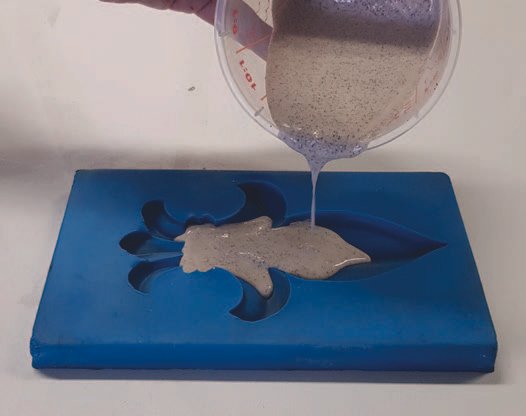
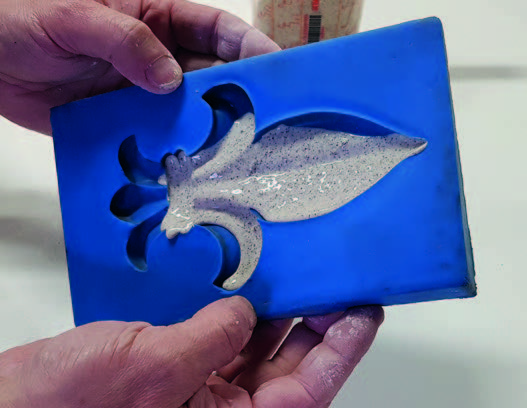


Brush, roller or spatula
3.0 With a brush or coat roller the A1 can be applied in a thin layer. This is particularly suitable for the application of a 1st layer A1, the so-called gelcoat layer or for laminating glass fabric such as A1 Triaxial fibre.
The brush or roller can be cleaned afterwards with water. A spatula is suitable to obtain a smooth finish. For this we advise to thicken the A1 with A1 Thix A or A1 ATP Powder.
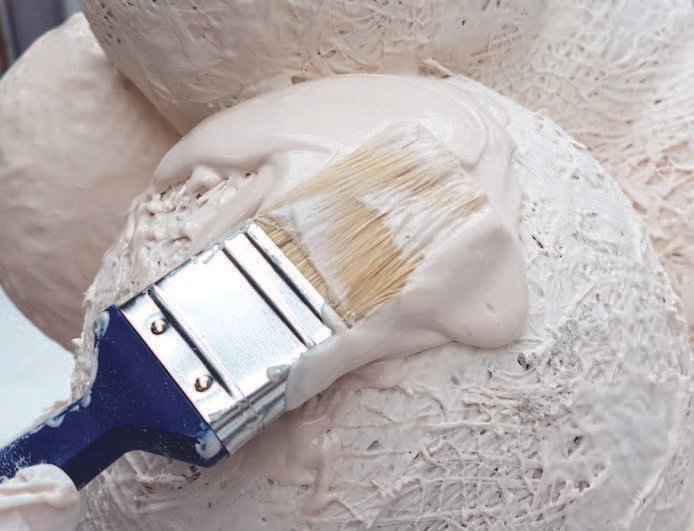
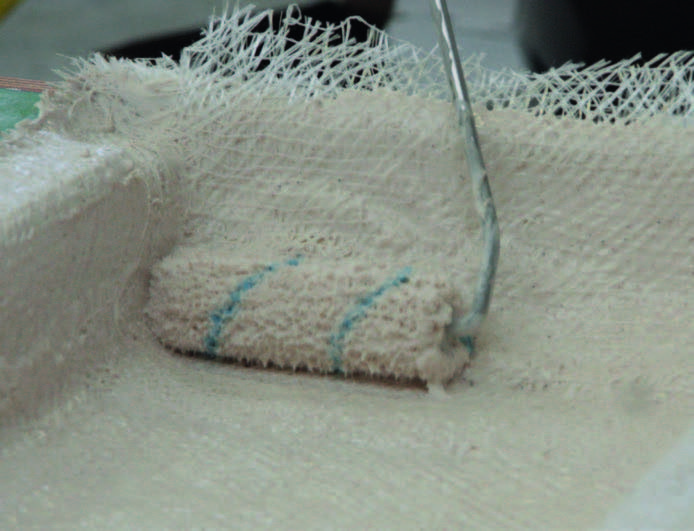
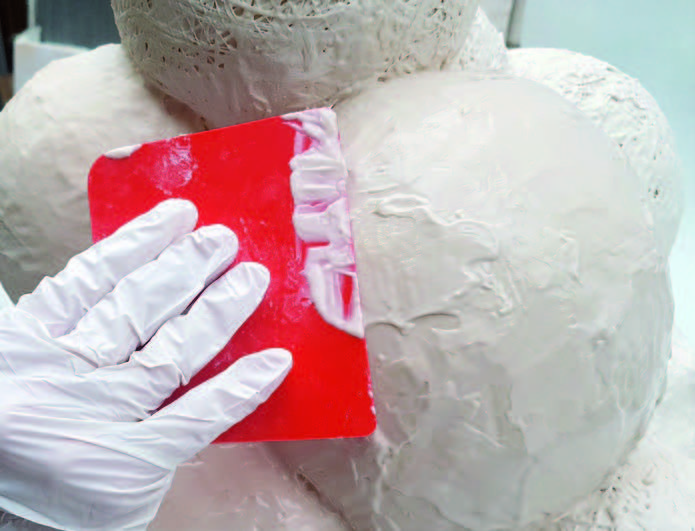
Spraying
4.0 A1 is easy to spray. This makes it possible to apply a thin layer of A1. This technique is ideally suited for working with a (silicone) mould, but also for applying A1 on, for example, a form made of EPS (Expanded Polystyrene).
For the cup-gun a minimum nozzle size of 1,5 mm is required. You will get a good result with 2,5 or 3 mm. Even a 3,5 mm can be used. We suggest to sift the A1 before spraying to remove lumps.
With a hopper gun the nozzle size can be bigger. Depends a little on the desired surface quality. Most hopper guns have a nozzle size of 4 – 6 mm. For large quantities it is also possible to use a big spraying machine with chopped fibres.


Rotational moulding
5.0 In a closed (silicone) mould, you can not only cast solid but also rotational. For this we have a special A1 rotation version available (A1 Rotation).
An important advantage of rotary casting is the weight saving, because only a limited amount of A1 is required compared to solid casting. The result is a lighter, but also directly a more fragile object. When rotational moulding, you pour the A1 Rotation into the mould and then rotate it until the entire inner wall of the mould is covered.
Rotate the object until the A1 starts to harden. You can check the moment of curing by checking the curing in the mixing cup. The hardening time of the A1 Rotation is around 30 – 40 minutes. The rotation can be done by hand or with a rotary machine. If desired, you can choose to have a 2nd or even 3rd layer of A1 by applying it through rotation.

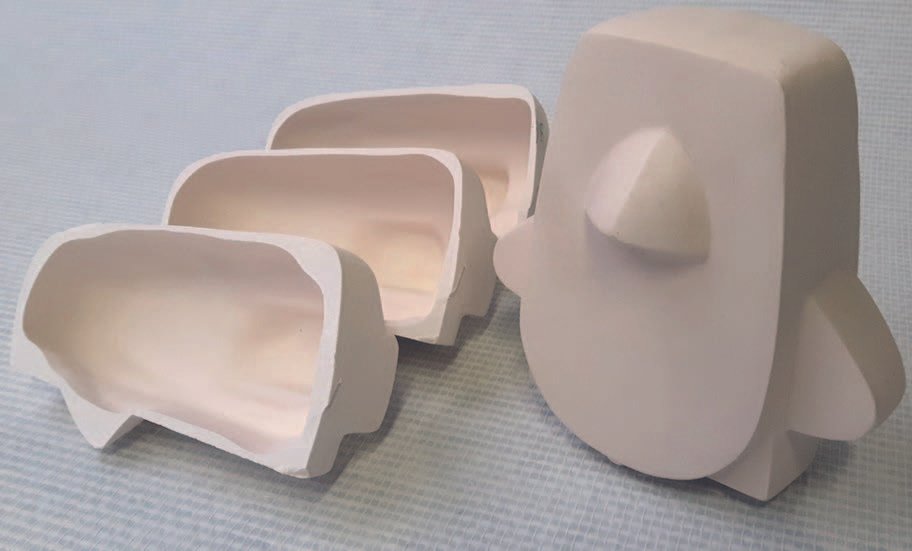
LAMINATING OF AN OBJECT
A1 adheres excellently to EPS (Expanded Polystyrene) and is therefore a frequently used combination. Objects, for example made from modelling foam, can also be covered with A1. To finish the object smoothly, a layer A1 mixed with A1 Thix A or A1 ATP Powder can be applied.
6.0 EPS coated with a layer of A1.
You can easily apply a layer of A1 to the EPS by brushing, spraying, rolling or filling it. Sometimes, it is necessary to thicken the A1 with A1 Thix A or A1 ATP Powder.
The strength of the A1 top layer also depends on the thickness of the A1 layer and the density of the EPS. To create a strong top layer, we recommend using 1 or more layers of A1 Triaxial fibre.
7.0 EPS coated with a layer of A1, reinforced with A1 Triaxial fibre.
Brush EPS with A1. Secure the A1 Triaxial fibre in the still wet layer of A1. The A1 Triaxial fibre provides the strength to A1. The advice is to process at least 2 layers of A1 Triaxial fibre. Before applying the A1 Triaxial fibre, it is useful to cut it to size first, given the processing time of A1.
Because you work over an EPS form, the first layer will be the inner layer and will not be visible later. Very important is that the A1 Triaxial fibre is completely soaked with A1 in each layer before you apply the next layer of A1 Triaxial fibre. This is because dry on dry provides air inclusion and consequently a vulnerable spot in the object.
8.0 EPS glued with A1.
2 parts of EPS can be glued together using A1. A1 acts as an adhesive in this instance.


9.0 PUR/PIR FOAM.
Although A1 on PUR/PIR adheres very well we advise to avoid the use of these foam systems. EPS can do the job with less risks compared to PUR/PIR. PUR/PIR is easier to shape by hand but that is probably the only advantage compared to EPS. Less risks, better water resistance and pricewise EPS is a better solution. Thermal expansion is more or less the same as we see with EPS but the form stability and possible after-foaming caused by moisture is a problem with PUR/PIR. This has to do with the way of producing these systems. Also, the use of PUR foam to fill up a product made of A1 is strongly not to be advised as well. The chemicals inside the PUR foam can have a negative influence on the A1 and the unpredictable foaming with high pressures can cause cracking as well. Even when using 3 or 4 layers of A1 Triaxial fibre.
10.0 Sawing through a form.
A1 has a processing time of about 20 – 25 minutes, after that the material is dry but still vulnerable. The advice to be able to saw and/or drill A1 properly is about a week as the A1 is (almost) finally cured. Sawing/drilling after 1 day is possible however be careful as the A1 object is not completely cured. You can use any sawing machine for this. Of course there is a difference in quality and skill of the machine. A water saw table or a dremel often gives a nice result.